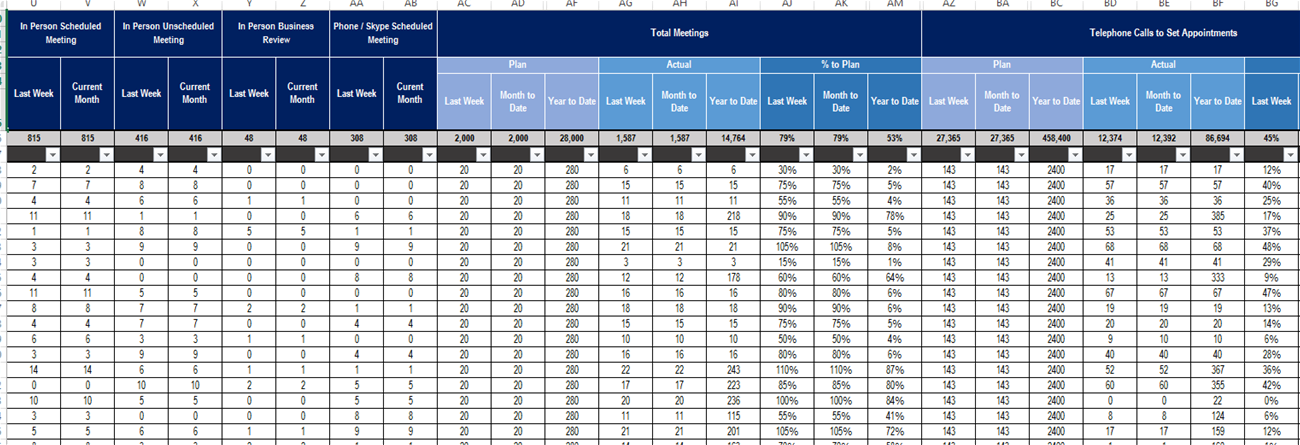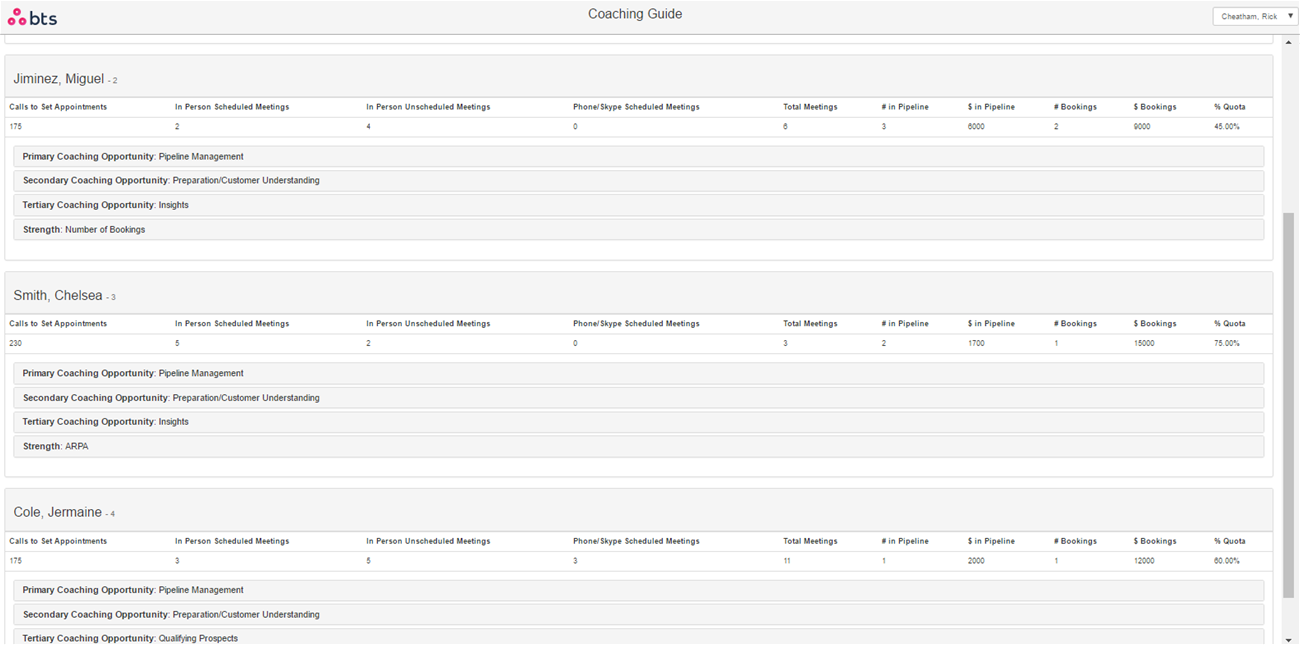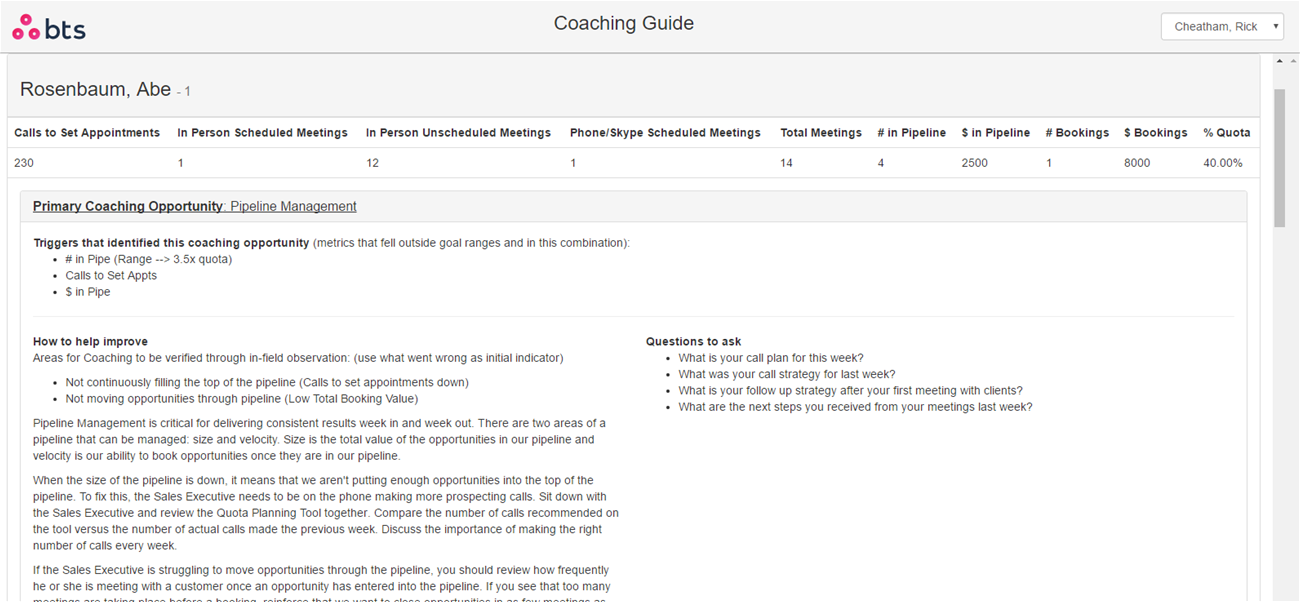The Problem
Sales managers are asked to act as an information node for the larger organization, solve problems for their customers, and manage and develop their team. The job has always been a lot. On top of that, there’s a renewed focus from sales leaders and enablement folks on the idea of coaching. They’re investing time and money into training their managers on how to coach and into sales operations that help report on performance and give them data. However, we find that managers often don’t have the time to do the skills coaching their being asked to do, and can’t interpret the data they’re being given.
Our Client Experience
A media client was going through a sales transformation, which started with customer segmentation and territory, role and compensation realignment. We were helping them introduce the new sales approach and sales management cadence—including coaching. Managers were asked to coach from a comprehensive report of activity and performance data.

It was a whole lot of data.

It was hard to know what to do with it. With all the time in the world, some sales managers would be able to go beyond pushing for higher activity levels and less discounting by identifying patterns and connecting metrics to sales skills. But nobody has time for that, meaning many will just stick with their gut, coach when they can, but mostly leap in to save the day when they think their reps need help closing. Even the best managers had a hard time sifting through the data for each of their 8-15 sales reps.
What We Did To Accelerate the Analysis
We set out to help the managers make sense of the data by correlating the metrics being measured to the behaviors, skills and actions critical to their new sales approach. Of 173 data points per rep, 13 proved critical to our analysis:
- Prospecting Calls
- Scheduled Meetings
- Unscheduled Meetings
- Scheduled Phone/Skype Meetings
- Total Meetings
- Number of Opportunities in Pipeline
- Value of Pipeline
- Average Value of Opportunities in Pipeline
- Number of Deals Booked
- Value of Deal Booked
- Average Deal Size Booked
- Revenue
- % to Quota
We correlated clusters of those metrics with 8 key behaviors that drove success in the sales approach:
- Time Management/ Prioritization
- Pipeline Management
- Insights
- Preparation/Customer Understanding
- Customer Needs Analysis
- Proposal Presentation
- Objection Resolution
- Expectation Setting
As an example of how the algorithm worked, if it saw:
- Not enough time on the phone (Low Number of Prospecting Calls)
- Too much time spent on in-field unscheduled meetings (High Number of Unscheduled Meetings)
- Not having the right type of meetings (High Number of Phone/Skype Meetings)
- Focusing on wrong opportunities (Low Average Booking Value)
It would select the Time Management and Prioritization guidance
Our cloud-based tool integrated with the client’s IT systems and analyzed the sales managers’ teams’ data and provided coaching guidance on their top needs:
- What are the 3 most important Coaching Opportunities this week for this Sales Rep?
- What’s the Biggest Strength for this Sales Rep?
- How did the Rep perform on the 10 key metrics?
- What questions should you ask the Rep, to help them perform better?

(team view)

(individual view)
The outcome was a system that allowed managers to know what topics to coach their reps on each week, which development activities to assign, what questions to ask and which things to watch for on ride-a-longs. Ultimately, it meant far less time looking sideways at spreadsheets and more time actually coaching people on the things that mattered.